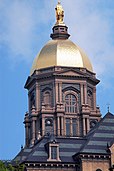User talk:Fdizile/My Stuff for Talk
| ||||
| • MY FRIENDS LIST • MY TEMPLATES • |
|
|
About Me
[edit]Category:Wikipedian web developers
Userboxes/Skills
[edit] | This user is a 3D artist. |
WikiProjects
[edit]| This user supports the MediaWiki third-party wiki system administrators by participating in WikiProject SysAdmins. |
| This user is a member of the Macintosh task force. |
| This user is a participant in WikiProject Apple Inc. |
| This user is a participant in WikiProject Computing. |
| This user is a participant in WikiProject Video games. |
| This user is a member of the Counter-Vandalism Unit. |
What I edit
[edit]I mostly edit things in the music, development, and video game "areas" of wikipedia but I also like to go on "Recent Edit" patrol.
Today's "Trends"
[edit]Moto of the Day
[edit]Today's motto...
Save paper. Waste electricity.
Tip of the Day
[edit]Tip of the moment...
 Help for new contributors
We have over 100 "help" pages, which are listed here: {{Wikipedia help pages}}. To ask a question or request help concerning Wikipedia, visit Questions. – – See also: To add this auto-randomizing template to your user page, use {{totd-random}}
|
|
|















